Email Automation
Email Automation Strategy
Keen to revolutionize your marketing? Discover the essential components of a successful email automation strategy and elevate your campaigns to new heights.

In navigating the constantly evolving field of digital marketing, an email automation strategy serves as a highly efficient system that delivers customized messages to your audience precisely when needed. It acts as a transformative tool for marketers aiming to refine their campaigns and foster significant interaction.
But how can we ensure that our email automation strategy is not just another automated message lost in the void of our subscribers' inboxes? Let's explore the key components that make a successful email automation strategy, from understanding the customer journey to crafting personalized messages that truly resonate with our audience.
Key Takeaways
- Email automation revolutionizes marketing by delivering personalized messages based on triggers, enhancing customer engagement, and driving conversions.
- Planning and segmentation are crucial in email automation strategy, including defining goals, identifying target audience, setting realistic objectives, and utilizing email verification tools.
- Crafting personalized messages tailored to individual preferences and behaviors is essential for enhancing customer experience, increasing engagement, and improving campaign performance.
- Implementing effective CTAs, using action-oriented language, ensuring visual prominence, and continuously optimizing through A/B testing, can significantly improve conversions and refine email marketing approach.
Understanding Email Automation
Email automation revolutionizes marketing by delivering personalized messages to subscribers based on specific triggers, enhancing customer engagement and driving conversions. Understanding email automation is crucial for leveraging its potential in the marketing automation software.
It enables marketers to create targeted and timely communications, delivering the right message to the right person at the right time. By utilizing customer data and behavior-triggered rules, email automation allows for the seamless delivery of welcome series, onboarding sequences, and personalized product recommendations. This strategy replaces manual, one-off messages with automated workflows that ensure consistent and relevant communication with subscribers.
Marketers can segment their audience based on various criteria, such as demographics, engagement levels, or past purchase behavior, to tailor their messages effectively. Understanding email automation involves grasping the power of triggered emails, dynamic content, and A/B testing to optimize campaign performance.
Planning Your Campaign
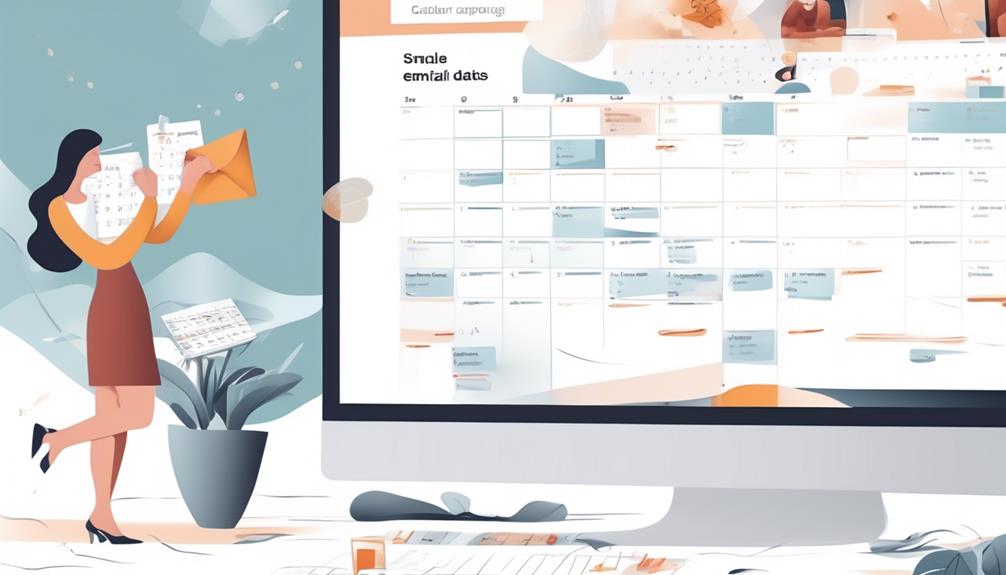
To plan an effective email automation campaign, it's crucial to define specific goals and measurable outcomes. Identifying your target audience and understanding their demographics and online behavior is essential for crafting personalized and engaging content.
Whether your goals are to nurture trust and engagement, increase social engagement, drive website traffic, build brand awareness, or convert free trial customers, it's important to set realistic objectives that align with your overall business goals.
Utilizing email verification tools can also ensure that your contacts are legitimate and increase the effectiveness of your automated campaigns. By segmenting your audience based on their behaviors and preferences, you can tailor your messaging to better resonate with each group, ultimately improving engagement and conversion rates.
Additionally, integrating your email automation with other aspects of your marketing strategy, such as social media and content marketing, can create a cohesive and impactful brand experience for your audience.
This strategic approach to planning your email automation campaign will maximize its effectiveness and drive better results for your business.
Segmenting Your Audience
By segmenting our audience based on demographics, behavior, and preferences, we can create personalized and relevant content for specific segments, leading to higher engagement and conversions. Segmenting your audience is a crucial aspect of an effective email automation strategy. Here's why:
- Personalization: Segmentation allows us to tailor our messages to different audience groups, making our emails more personalized and relevant.
- Higher Engagement: Sending targeted messages to specific segments increases the likelihood of higher engagement as the content resonates with the recipients.
- Improved Conversions: Understanding customer behavior through segmentation helps in crafting compelling content that can lead to improved conversion rates.
- Optimized Campaign Performance: Segmentation enables us to deliver the right message to the right audience at the right time, ultimately improving the overall effectiveness of our automation campaigns.
Utilizing audience segmentation ensures that our emails are more targeted, increasing the likelihood of driving meaningful actions and interactions from our subscribers. Therefore, segmenting the audience plays a pivotal role in the success of our email automation campaigns.
Crafting Personalized Messages

Crafting personalized messages is essential for maximizing customer engagement and conversions.
By leveraging customer data, we can tailor our content to individual preferences and behaviors, making our emails more relevant and impactful.
Implementing segmentation and dynamic content allows us to speak directly to each recipient's unique needs, driving higher levels of interaction and satisfaction.
Personalization Techniques
Leveraging personalization techniques in email automation involves tailoring messages to individual subscribers based on their behavior, preferences, and demographics to enhance customer experience and drive higher conversions. Crafting personalized messages includes using dynamic content, customer data, and segmentation to create relevant and engaging email content.
By leveraging personalization techniques, marketers can enhance customer experience, increase engagement, and drive higher conversions. Personalized messages can include tailored product recommendations, relevant offers, and customized content based on subscriber interactions.
Personalization in email automation can lead to stronger customer relationships, increased brand loyalty, and improved email campaign performance.
Customer Engagement
Tailoring content to individual customer interests and behaviors enhances customer engagement and drives higher conversions in email automation. Crafting personalized messages based on triggers such as purchases, website visits, or specific actions is vital for effective automated email marketing.
Personalization engines play a crucial role in customizing content to match customer preferences, thereby increasing the impact of an email automation strategy.
The use of personalized messages not only increases engagement, conversions, and revenue but also fosters stronger customer relationships and boosts customer satisfaction.
Implementing Effective CTAs
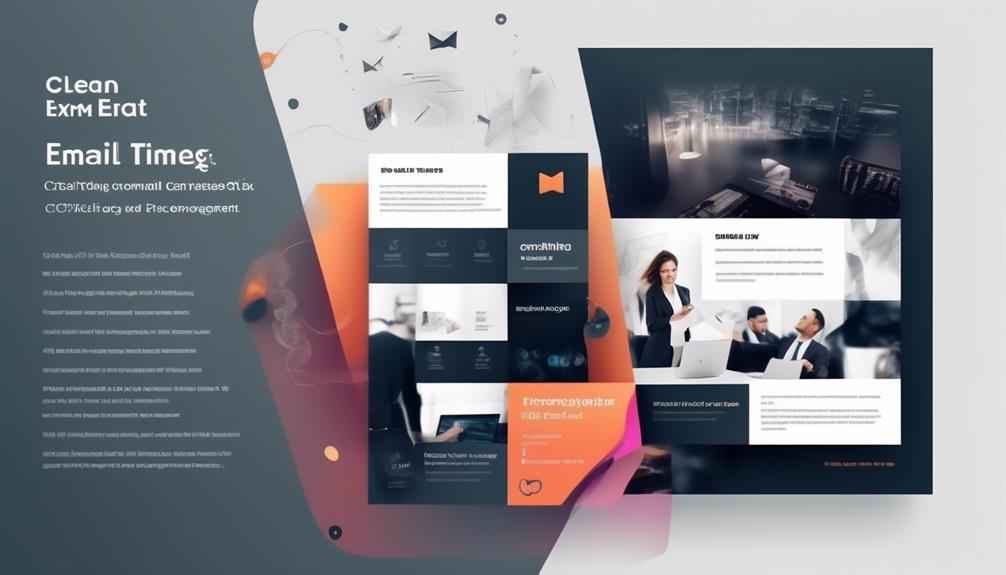
To effectively prompt specific actions from your audience through email CTAs, it's essential to craft clear and compelling messages using action-oriented language that encourages clicks. When implementing effective CTAs in your automated email campaigns, consider the following best practices:
- Use action-oriented language: Employ phrases like 'Shop Now,' 'Learn More,' or 'Get Started' to prompt immediate engagement.
- Visual prominence: Ensure that the CTA stands out visually within the email and is positioned prominently to capture the reader's attention.
- Personalization: Tailor CTAs based on customer segments and behaviors to drive higher engagement and relevance.
- Continuous optimization: Test different CTAs and analyze their performance to optimize for conversions, leveraging A/B testing and data analysis to refine your approach.
Leveraging A/B Testing
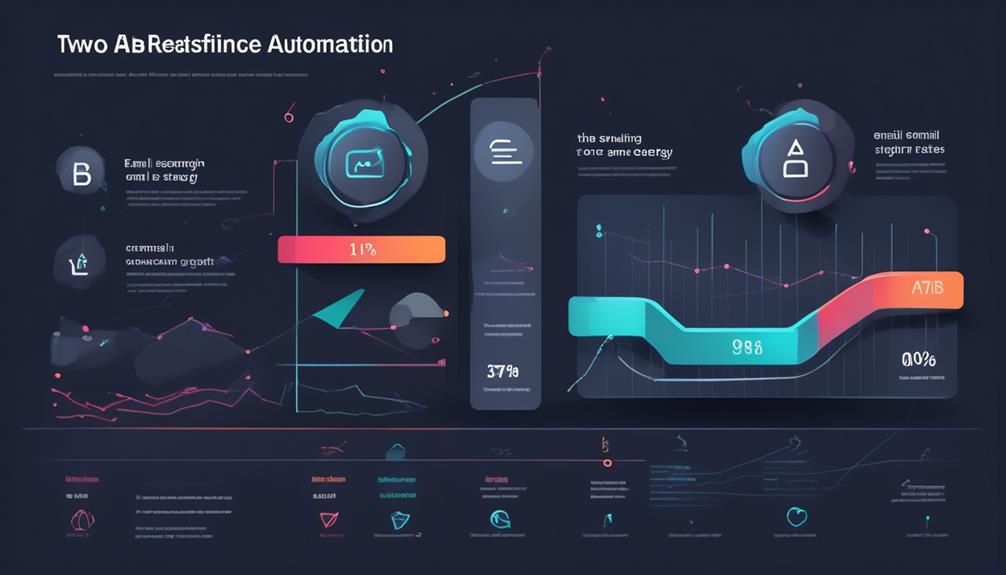
How can A/B testing enhance the effectiveness of email marketing campaigns?
A/B testing, also known as split testing, is a powerful tool for optimizing email marketing efforts. By comparing two versions of an email, marketers can gather valuable insights to refine their automation workflows.
This method allows for testing different elements such as subject lines, images, or call-to-action buttons, enabling data-driven decisions to be made. Utilizing A/B testing in email marketing provides the opportunity for continuous improvement and optimization, leading to increased engagement and conversion rates.
Leveraging A/B testing empowers marketers to make informed decisions about email content, design, and strategies, ultimately enhancing the overall effectiveness of email campaigns.
Optimizing and Repeating
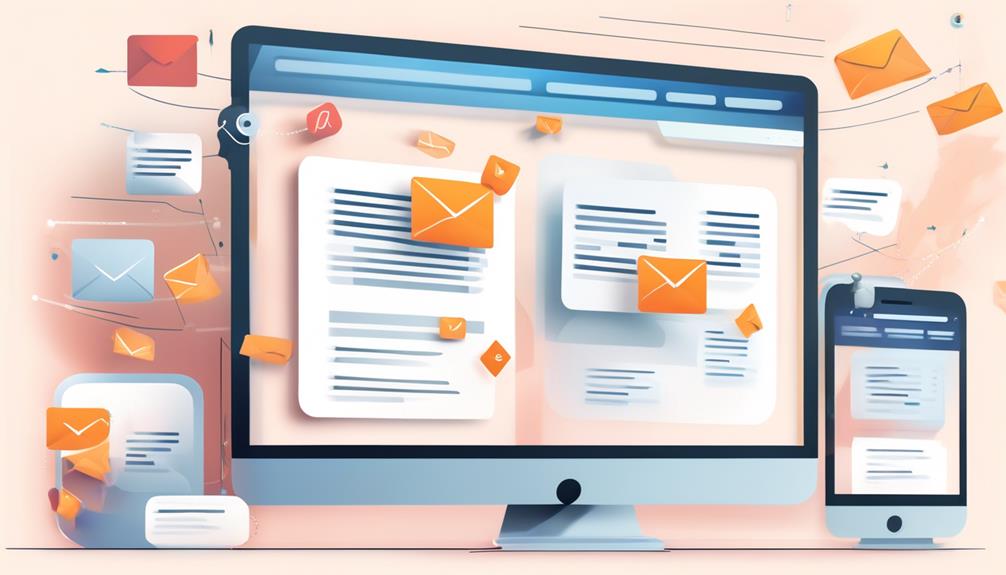
Continuously refining and optimizing email automation workflows is crucial to enhancing customer experiences and maximizing campaign performance. To achieve this, we must focus on the following key strategies:
- A/B Testing: Optimize email content and subject lines through A/B testing to improve engagement and conversions. By testing different variations, we can identify what resonates best with our audience and fine-tune our automated messages for maximum impact.
- Repeat Successful Strategies: When we find email automation strategies that deliver exceptional results, it's essential to repeat them. By reinforcing customer engagement through consistently successful approaches, we can drive consistent and reliable outcomes.
- Segmentation and Personalization: Utilize segmentation and personalization consistently to maximize the effectiveness of email automation strategies. Tailoring messages to specific audience segments enhances relevance and increases the likelihood of engagement.
- List Growth Tactics: Implement targeted signup forms and incentives to build a strong and engaged email list, repeating successful tactics for list growth. By consistently employing effective methods for growing our subscriber base, we can ensure a steady influx of potential leads.
How Can I Incorporate Date Based Email Automation into My Overall Email Automation Strategy?
Looking to automate your email dates? Consider integrating date-based email automation into your overall strategy. By setting up trigger-based emails for specific dates or events, you can personalize your messaging and engage with your audience at the right time. Incorporating this feature can streamline your email marketing efforts and improve customer communication.
Analyzing Results

As we analyze the results of our email automation strategy, we'll focus on key metrics like open rates, click-through rates, and conversion rates.
By utilizing A/B testing, we can compare different email templates and subject lines to identify top performers.
Evaluating lead generation metrics will provide insights into the effectiveness of our campaigns, allowing us to refine and improve our strategy for better outcomes.
Metrics Analysis
Regularly analyzing key performance indicators (KPIs) such as open rates, click-through rates, and conversion rates is essential for gauging the effectiveness of email automation campaigns.
When delving into metrics analysis, it's crucial to focus on the following aspects:
- Engagement: Examining open and click-through rates provides insights into how compelling the email content is to the recipients.
- Retention: Monitoring subscriber activity and how it correlates with the conversion rates helps in understanding customer retention.
- Revenue Generation: Analyzing conversion rates and tracking the revenue generated from email automation campaigns is crucial for determining the financial impact.
Utilizing an advanced email marketing platform enables seamless data collection and analysis to make informed decisions and optimize email automation strategies for improved performance and higher conversion rates.
Campaign Performance
Analyzing campaign performance provides valuable insights into the effectiveness of our email automation strategy. By scrutinizing metrics like open rates, click-through rates, and conversion rates, we gain a comprehensive understanding of our automated drip campaigns.
This analysis enables us to make data-driven decisions to enhance our email automation strategy. Comparing results against key performance indicators (KPIs) allows us to assess the impact of our campaigns and identify areas for improvement.
Continuously evaluating and refining our email automation strategy is essential for optimizing performance. It's crucial to leverage these insights to adapt and evolve our campaigns, ensuring that we consistently deliver relevant and engaging content to our audience.
This iterative approach empowers us to maximize the impact of our email automation strategy.
Data Interpretation
After evaluating the performance of our email campaigns, we derive actionable insights from the data to refine our email automation strategy through data interpretation.
Analyzing results in email automation involves evaluating key performance indicators (KPIs) like open rates, click-through rates, and conversion rates. It helps in understanding the effectiveness of email campaigns and making data-driven decisions for optimization.
Analyzing results also involves conducting A/B testing to compare different email templates, subject lines, and content to determine what resonates best with the audience.
By analyzing results, marketers can gain insights into customer behavior, preferences, and engagement levels to refine their email automation strategy for better performance.
The process of analyzing results in email automation enables marketers to measure the success of their campaigns against their predefined goals and objectives.
Frequently Asked Questions
How Do You Plan an Email Automation?
We plan email automation by setting clear goals aligned with business objectives.
Using segmentation and personalization for engaging messages.
Implementing A/B testing for optimization.
Employing automation workflows and drip campaigns for lead nurturing.
Selecting a credible marketing automation platform.
This data-driven approach ensures relevance and effectiveness, ultimately leading to a better customer experience.
What Are the 7 Email Marketing Strategies?
Oh, the 7 email marketing strategies?
Well, segmentation and personalization, A/B testing, and leveraging dynamic content are key.
Then there's email automation for triggered series, workflows, and drip campaigns.
These drive customer engagement and conversions.
It's all about targeting and nurturing leads, aligning with customer journeys, and re-engaging inactive subscribers for optimal results.
Mastering these strategies can truly elevate your email marketing game.
What Is the Email Automation Process?
We send personalized, automated messages triggered by specific actions or events. This process helps us deliver timely, customized messages based on customer data and behavior-triggered rules.
We integrate customer data into specialized platforms, design email series, and specify triggers and conditions for sending each email. Examples include welcome, birthday, cart recovery, re-engagement, and abandoned product series.
Email automation helps build relationships, drive traffic, increase social engagement, and boost sales conversions while saving time and effort.
Is There a Way to Automate Emails?
Is there a way to automate emails?
Absolutely! We leverage email automation to send personalized messages triggered by customer actions. It allows for targeted, timely communication based on specific conditions.
This approach replaces manual, one-off emails, streamlining our outreach and enhancing customer engagement. By harnessing automation, we can create complex, personalized email journeys that cater to individual subscriber behavior, ultimately driving better results and customer satisfaction.
Conclusion
In conclusion, email automation strategy is essential for delivering personalized and timely messages to your audience.
Just like a well-oiled machine, email automation helps streamline your campaigns, build relationships, and achieve your business goals.
By leveraging this strategy, we can ensure that our messages are reaching the right people at the right time, leading to higher engagement and conversions.
It's like having a personal assistant for your email marketing efforts, making everything run smoothly and efficiently.
Erik – Email, SEO, AI Expert Writer Erik is the strategist, the thinker, and the visionary. His role at Influenctor is pivotal in integrating SEO with AI-driven content strategies. With an extensive background in email marketing and a profound understanding of search engine algorithms, Erik develops innovative strategies that elevate our client’s online presence. His work ensures that our content is seen, felt, and remembered.
How to Write Email
Vacation Email Etiquette: How to Write with Politeness
Struggling to craft the perfect vacation email? You'll want to keep reading for essential tips and strategies to nail it.

So, we’re all familiar with the routine of composing a professional out-of-office email, correct? Actually, perhaps not.
While the idea of taking time off sounds like a breeze, the art of communicating that to your colleagues can be a bit more complex.
But fear not, because we've got some key tips and strategies to help you navigate the ins and outs of drafting the perfect out-of-office message.
Whether it's setting clear expectations or ensuring your absence won't disrupt the team's workflow, there's a lot to consider when it comes to mastering the art of the vacation email.
Key Takeaways
- Include specific details such as dates of absence, expected return date, and urgent instructions in the vacation email.
- Clearly communicate dates of absence in the out-of-office message and provide alternative contacts for urgent matters.
- Maintain a professional tone in all communication and convey professionalism and reliability in the out-of-office message.
- Understand company vacation policy and use appropriate request email templates, while also considering the impact on workload and showing consideration for the team when requesting time off.
Essential Components of a Vacation Email
When crafting a vacation email, it's essential to include specific details such as the dates of your absence, your expected return date, and any necessary instructions for urgent matters. A concise subject line should indicate that it's an informal vacation request. In the body of the email, maintain a professional tone to ensure a smooth and clear communication process.
In the first paragraph, clearly state the purpose of the email – to request vacation time. Provide the dates of your absence, including the start and end dates, and your expected return date. This information helps the recipient understand the duration of your absence and plan accordingly.
Additionally, if there are any specific instructions for urgent matters during your absence, make sure to include them in the email to ensure that any critical issues can be addressed in your absence.
Crafting a Professional Out-of-Office Message
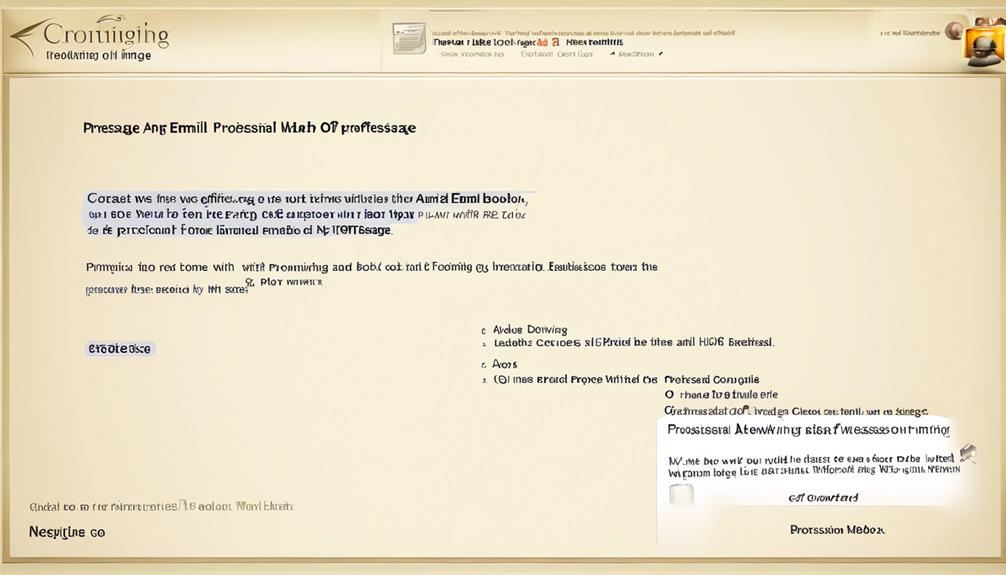
After requesting vacation time, it's important to also craft a professional out-of-office message that clearly communicates the dates of absence and provides alternative contacts for urgent matters.
When writing the out-of-office message, it's essential to ensure that it conveys a sense of professionalism and reliability. Clearly state the dates of your absence and provide an alternative contact in case of urgent matters.
It's good practice to express gratitude for understanding and cooperation during your leave. Additionally, offer to follow up on any pending matters upon your return to reassure colleagues and clients that their issues will be addressed promptly.
While crafting the message, it's important to adhere to company communication standards and policies to maintain consistency in tone and content. Avoid sharing unnecessary personal details in the out-of-office message to maintain a professional tone.
Writing a good out-of-office message is crucial as it reflects your commitment to professionalism and ensures that important matters are attended to in your absence.
Setting Expectations With Colleagues and Clients
To ensure smooth communication during my absence, we will clearly communicate our availability and response times for emails and calls to colleagues and clients. It's crucial to set realistic expectations and maintain a professional tone in all communication. Here is a simple table to help you craft a professional email and set expectations with your colleagues and clients:
| Information to Include | Example |
|---|---|
| Availability during vacation | I will be out of the office from [start date] to [end date]. |
| Response times for emails and calls | I will have limited access to emails and will respond within 24-48 hours. |
| Delegated responsibilities | Please contact [colleague's name] for any urgent matters. |
| Contact information | For immediate assistance, please reach out to [colleague's name] at [contact information]. |
Effective Examples of Out-of-Office Messages

Crafting effective out-of-office messages is an essential aspect of maintaining clear communication while on vacation. When writing these messages, it's important to be polite and professional while providing the necessary information. Here are three effective examples of out-of-office messages that you can use as a template for your own:
- 'I am currently out of the office and will return on [date]. For urgent matters, please contact [colleague's name] at [colleague's email].'
- 'Thank you for your email. I'm out of the office until [date] and will have limited access to email. For immediate assistance, please contact [alternative contact].'
- 'I am on vacation until [date] and won't be checking emails. For urgent matters, please reach out to [colleague's name] at [colleague's email].'
These examples demonstrate a good rule of thumb for crafting effective out-of-office messages. They provide clear information about the duration of the absence, alternative contacts for urgent matters, and set professional expectations for communication while away.
When using these examples, be sure to customize them to fit your specific situation and maintain a polite and professional tone.
Mastering the Art of the Vacation Email
As we focus on mastering the art of the vacation email, it's essential to seamlessly shift from crafting effective out-of-office messages to the nuances of requesting and composing a professional vacation email.
When it comes to requesting time off, knowing how to write a Vacation Leave Request or Time Off Email is crucial. We need to make sure we understand the company vacation policy and use the appropriate request email template. It's important to know the steps for writing a vacation request email, including a concise subject line, specifying the reason for the request, exact dates, preparation steps, and a thank-you note. Additionally, we should ask ourselves if we really need to take those days off, consider the impact on our workload, and reflect consideration for our team.
Understanding different types of vacation request emails, such as reminders, emergency time off, annual vacations, one day off, or canceling a vacation request, is also essential. Before sending a vacation request email, we need to ensure we include emergency contact information if necessary and assure coverage during our absence.
Mastering the art of the vacation email requires attention to detail and adherence to professional etiquette.
Frequently Asked Questions
What Should I Write in a Vacation Email?
We should include the dates of our absence, the reason for our vacation, and who to contact in our absence.
It's important to keep the email brief and to the point, while also expressing gratitude for understanding.
We can reassure the recipient that we'll respond to any urgent matters upon our return.
It's also good to set up an out-of-office auto-reply with the same information.
How Do You Write an Email for Time Off?
We write an email for time off by crafting a clear subject line, stating the purpose, providing specific dates, and outlining a plan for managing responsibilities during absence.
We ensure to include emergency contact information and express willingness to address any concerns. Politeness, professionalism, and appreciation are crucial throughout.
Understanding company policies and considering workload impact on colleagues help in crafting a thoughtful request reflecting consideration for the team.
How Do You Email a Planned Vacation Leave?
When we email a planned vacation leave, it's important to be clear and concise about the dates and reason for our absence. We should also mention who'll be covering for us in our absence and provide any necessary contact information.
It's crucial to ensure that our email is professional and respectful of our colleagues' time and responsibilities. Lastly, we should make sure to set up an out-of-office auto-reply for any incoming emails during our vacation.
How Do I Professionally Say I Am on Vacation?
We inform our colleagues of our vacation by clearly stating the purpose and dates.
We assure them that work will be handled and maintain a polite and professional tone.
We offer to address any concerns and end with a thank you note and openness to discussions.
This approach ensures a professional and considerate communication of our absence.
Conclusion
We understand that taking vacation time can sometimes feel like a burden on our colleagues. However, by following the proper procedures and communicating effectively, we can ensure a smooth transition and minimal disruption.
Our team's support for each other's well-deserved time off strengthens our bond and ultimately leads to a more productive and positive work environment.
Erik – Email, SEO, AI Expert Writer Erik is the strategist, the thinker, and the visionary. His role at Influenctor is pivotal in integrating SEO with AI-driven content strategies. With an extensive background in email marketing and a profound understanding of search engine algorithms, Erik develops innovative strategies that elevate our client’s online presence. His work ensures that our content is seen, felt, and remembered.
Email Template
Crafting an Effective No-Show Email Template
Hone your professional communication skills with a no-show email template that preserves relationships and ensures a graceful response. Want to master this essential tool?

As professionals, we frequently navigate the challenging task of preserving business connections while also honoring our personal time and schedules. It’s a nuanced balance to strike, yet there exists a tool that can facilitate our journey through these complexities with simplicity.
No-show email templates offer a way to handle missed appointments gracefully and efficiently, but there's more to it than just sending a standard message. Interested in learning how to craft the perfect no-show email that maintains professionalism while preserving the business relationship?
Join us as we explore the art of effective communication in the face of a no-show and discover the key elements of a successful no-show email template.
Key Takeaways
- Striking a balance between professionalism and empathy in no-show emails
- Offering clear and convenient options to reschedule in the email
- Using concise subject lines to capture attention in no-show emails
- Sending timely reminders to prevent no-show meetings
Crafting the Perfect No-Show Email
Crafting the Perfect No-Show Email involves striking a balance between professionalism and empathy to effectively re-engage with missed prospects.
When a prospect or customer has missed the meeting time, it's essential to send a no-show email that conveys understanding while also reaffirming the value of the meeting.
Crafting the perfect no-show email requires a strategic approach. It's crucial to acknowledge the missed appointment with empathy, expressing understanding of the prospect's time constraints and the challenges they may face.
Simultaneously, the email should gently remind the prospect of the value they stand to gain from meeting with us. It's important to offer to reschedule the meeting with clear, convenient options, showing flexibility and understanding of their schedule.
Our no-show email template should maintain professionalism, avoid blaming or shaming the prospect, and present a positive, solution-oriented tone.
Tips for Writing an Effective Email
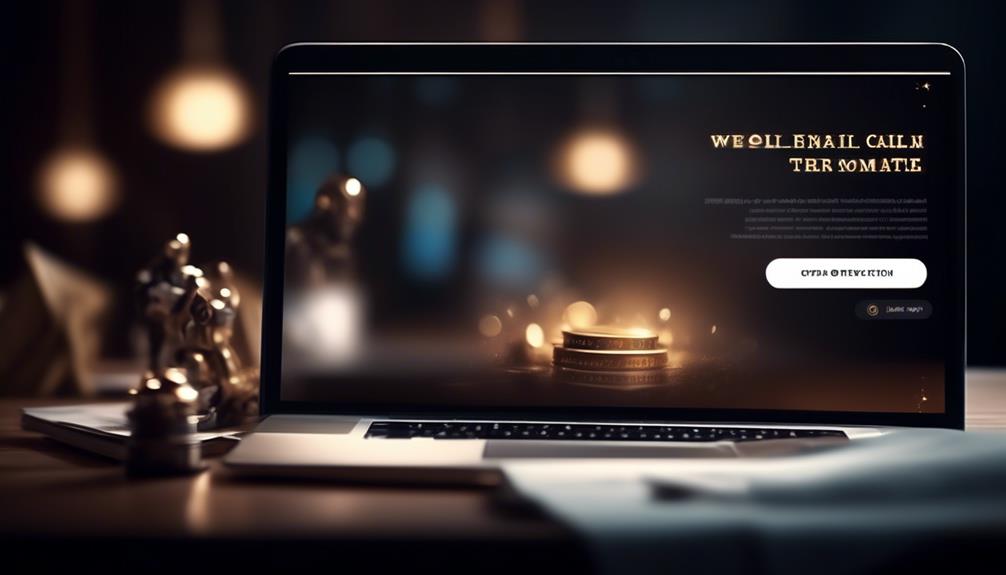
After empathetically acknowledging a missed appointment, the next crucial step is to pivot to the subtopic of 'Tips for Writing an Effective Email' by offering practical guidance on creating impactful and engaging email content.
When crafting an effective email, start with a concise subject line that encapsulates the email's essence. This ensures that the recipient grasps the purpose at first glance.
A professional and friendly greeting sets a positive tone, creating a welcoming atmosphere for the reader. In the opening paragraph, clearly state the purpose of the email to immediately capture the recipient's attention.
Keep the content focused and organized, ensuring easy readability and understanding. Use paragraphs and bullet points to structure the email effectively.
Conclude with a polite and clear call to action, indicating the next steps or expectations. By following these tips, you can create emails that engage your prospects or clients, respect their time, and effectively convey your message.
Incorporating these strategies into your email writing will help you maximize the impact of your communication and ultimately enhance your professional relationships.
No-Show Email Template Examples
We can effectively address missed appointments by utilizing a variety of no-show email templates. These templates include general, missed call, follow-up, reschedule, and value proposition templates.
For the general template, a polite and concise message expressing disappointment about the missed meeting and offering a rescheduling option can be sent.
If a phone call was missed, a missed call template can be used to express concern and provide alternative ways to connect.
A follow-up email can be effective to re-engage with the prospect, providing additional value or information to encourage a response.
The reschedule template can be used to suggest new meeting times and express understanding for the inconvenience caused.
Lastly, a value proposition template can be employed to emphasize the benefits of the appointment and encourage the prospect to reschedule.
These examples showcase the effective use of different templates you can use when a prospect has missed a meeting. It's essential to send one of these templates in a timely manner to maintain communication and increase the likelihood of rescheduling.
How to Automate Email Responses

Automating email responses revolutionizes our communication strategy by enhancing efficiency and maintaining a consistent, personalized approach. By using email automation tools like Text Blaze, we can streamline the process and increase productivity. Customizable variables allow for personalization, ensuring that each automated email feels tailored to individual preferences. This not only saves time and effort but also reduces errors and typos in responses. Here's a comparison of how automated email responses differ from manual ones:
| Automated Email Response | Manual Email Response |
|---|---|
| Saves time and effort | Time-consuming |
| Ensures consistency | Prone to errors |
| Personalized | Generic |
Automating email responses also allows for quick and efficient communication. It's as easy as creating and scheduling templates for various scenarios such as meeting agendas, follow-ups after a phone call, or rescheduling a missed appointment. This ensures that important messages are sent at the right time, without the need for manual intervention. With automation, we can focus on high-value tasks while still maintaining a personalized touch in our email communication.
Preventing No-Show Meetings
To minimize the occurrence of no-show meetings, timely reminders and clear communication are essential for ensuring attendee commitment and engagement. Sending out reminders a day before and an hour prior to the meeting can help attendees prioritize and remember the appointment.
Implementing appointment software like Google Calendar or Calendly can streamline scheduling and reduce no-shows. It's also crucial to establish clear communication regarding the value and purpose of the meeting to emphasize its importance.
Utilizing email templates to professionally follow up with no-shows is essential. These templates should provide options to reschedule and maintain the business relationship, as well as express understanding if there was a legitimate reason for the no-show.
It's also important to consider offering alternative meeting formats, such as video or phone calls, to accommodate diverse preferences and reduce the likelihood of no-shows.
Frequently Asked Questions
How Do You Write an Email for a No-Show Meeting?
We address missed meetings by sending a concise and empathetic email expressing our understanding of the situation. We offer alternative meeting times and emphasize the value of the appointment to the prospect. This approach maintains professionalism and shows our commitment to their needs.
It's crucial to remain calm and understanding, while also stressing the importance of the meeting. This approach helps to foster positive relationships and ensures that prospects feel valued.
How Do You Say No-Show Professionally?
When we address a no-show professionally, we emphasize empathy, offer solutions, and focus on the value of the meeting or appointment.
Our approach maintains a positive and understanding tone, expressing the importance of the engagement and the impact of the absence.
How Do You Email Someone Who Is a No-Show?
When someone doesn't show up, we reach out with a polite and understanding email. We emphasize the missed opportunity to connect and express our willingness to reschedule. This keeps the door open for future interactions and maintains professional relations.
It's important to strike a balance between being courteous and firm to convey the impact of the no-show while leaving the possibility for a future meeting.
How Do You Send a No-Show Message?
We send a no-show message by addressing the situation with empathy, offering alternative options, and emphasizing the value of the missed interaction. It's essential to remain calm, express understanding, and provide clear instructions for next steps. This ensures effective communication with the prospect and increases the likelihood of a positive outcome.
Using templates saves time, maintains consistency, and allows for customization, enhancing productivity and reducing errors.
Conclusion
So there you have it, folks. With the power of no-show email templates, you can turn missed meetings into opportunities. Remember to keep it professional, offer alternatives, and show understanding.
And if all else fails, automate those responses and free up your time for more important things – like catching up on your favorite TV show. Happy emailing!
Natali – Editor in Chief (Strategy and Mastery, AI Expert) Natali, our Editor in Chief, is the driving force behind our content’s strategic direction. With a keen eye for detail and a deep understanding of market trends, Natali ensures that our content is top-notch and strategically aligned with our client’s goals. Her expertise in AI helps to seamlessly integrate advanced technology into our marketing strategies, pushing the boundaries of conventional marketing.
Email Template
Unlock the Secret to Perfect Emails: Mastering Mailchimp Template Sizes Efficiently
Keen to maximize your Mailchimp email templates? Discover the key to creating visually appealing and impactful emails with optimal size and formatting.

It’s a well-known fact that the average individual receives 121 emails daily. Given this significant influx of emails, it’s essential to make sure your email is noticeable and can be easily opened on various devices and through different email clients.
When it comes to email template size in Mailchimp, there are specific guidelines and best practices that can make or break the success of your email campaigns. Understanding the optimal size and formatting for Mailchimp templates can significantly impact the effectiveness of your email marketing efforts.
So, let’s dive into the world of email template size in Mailchimp and explore the best strategies for creating visually appealing and impactful emails.
Key Takeaways
- Mailchimp’s recommended template size is 600 pixels wide, but it can be stretched by adding a thin image in Text content blocks.
- Testing stretched campaigns in different email clients is essential for optimal display.
- Mobile optimization is important, so images should display correctly on both desktop and mobile devices.
- Mailchimp recommends setting images at double the width of their display size for high-quality display on retina screens and high-resolution devices.
Optimal Email Template Size for Mailchimp
When designing an email template for Mailchimp, it’s essential to consider the optimal size to ensure compatibility with various email clients. In Mailchimp’s Campaign Builder, templates are designed to be 600 pixels wide to ensure that they display correctly across most email platforms. It’s important to note that if you need to stretch a template wider than 600px, adding a thin image in Text content blocks can force the template to stretch accordingly.
However, testing stretched campaigns in various email clients is crucial to ensure optimal display.
In the realm of email marketing, mobile optimization is paramount for reaching a wider audience and providing a seamless user experience. Therefore, when setting image sizes, it’s crucial to ensure that images display correctly on both desktop and mobile devices. Mailchimp recommends setting images at double the width of their display size to ensure high-quality display on retina screens and other high-resolution devices.
Considering these factors when determining the optimal size for your email templates in Mailchimp can significantly impact the success of your email campaigns.
Using Images in Mailchimp Templates

Using images in Mailchimp templates enhances the visual appeal and engagement of your email campaigns.
When incorporating images into your Mailchimp templates, it’s important to consider the recommended width of 600 pixels to ensure compatibility with various email clients.
To stretch a drag-and-drop template, upload an image that’s wider than 600 pixels in each Text content block. However, it’s crucial to test the campaign in multiple email clients after stretching it to a width larger than 600 pixels.
Additionally, understanding how your email behaves on mobile devices is essential. Test your email campaign on different mobile devices and screen sizes to ensure optimal display.
When uploading images to an Image block in Mailchimp, use full-sized images instead of shrinking them to maintain sharpness on devices with retina displays.
Mailchimp Image Size Recommendations
Optimizing your images to adhere to Mailchimp’s recommended width of 600 pixels can significantly impact the visual appeal and compatibility of your email campaigns across various email clients. It’s crucial to ensure that images uploaded to Mailchimp adhere to the recommended image sizes.
The maximum width of 600 pixels is ideal for ensuring that your images display properly across different devices and email clients. When uploading an image, consider doubling the size to accommodate high-resolution Retina displays while keeping in mind that larger images may increase loading time.
Additionally, if you need to stretch a template, uploading an image that’s more than 600 pixels wide in each Text content block can force the template to expand. However, it’s important to test the campaign in various email clients after stretching it beyond the recommended width to ensure compatibility.
Setting Image Sizes in Mailchimp

Adhering to Mailchimp’s recommended image sizes not only enhances the visual appeal of your email campaigns but also ensures compatibility across various email clients and devices.
When setting image sizes in Mailchimp, it’s crucial to keep in mind that templates are designed to be no wider than 600px to accommodate most email clients’ display capabilities. The width of the underlying template code can’t be adjusted through the Campaign Builder.
However, if you need to stretch a drag-and-drop template, you can upload an image wider than 600 pixels within a Text content block to force the template to expand. After stretching the campaign, it’s essential to thoroughly test it in various email clients to ensure optimal display.
Additionally, when adding a new repeatable section with an image, you can specify the width using the image settings pane in Mailchimp, and the height will be automatically calculated.
Troubleshooting Mailchimp Image Issues

Maximizing the visual impact of your email campaigns while overcoming Mailchimp’s 600px template width limitation requires understanding and addressing common image troubleshooting issues.
When troubleshooting Mailchimp image issues, consider the following:
- Image sizes for Mailchimp: Ensure your images are optimized for display within Mailchimp’s 600px width limit.
- Wide images: Use wider images strategically and test for how they display across various email clients.
- Content displays: Pay attention to how your content displays for the best image and text alignment.
- Maximum file size: Optimize your images to meet Mailchimp’s maximum file size recommendations.
Understanding these troubleshooting tips will help ensure that your images display effectively in your Mailchimp emails, maximizing the impact of your email campaigns.
Frequently Asked Questions
What Is the Size of an Email Template?
The size of an email template is crucial for compatibility across various email clients. To ensure proper display, Mailchimp’s templates are designed to be no wider than 600px.
If you need to stretch a template, upload an image wider than 600px in each Text content block. Testing the stretched campaign in different email clients is essential to ensure it displays correctly.
We recommend formatting image files as JPG, GIF, or PNG for compatibility.
What Is the Best Size for Email Graphics?
When it comes to email graphics, the best size is one that strikes the perfect balance between eye-catching and fast-loading.
We prioritize a size that’s visually appealing on all devices and email clients, ensuring a seamless experience for our audience.
Our team meticulously tests and optimizes graphics to guarantee they display flawlessly, maximizing engagement and impact.
It’s all about finding the sweet spot for graphics that captivate and convert.
What Is the Template Limit for Mailchimp?
The template limit for Mailchimp is 600px wide, designed to fit most email clients. We can’t change the width through the Campaign Builder. If we need a wider email, we’ll need custom code or a designer.
To stretch a drag-and-drop template, we can add a Text content block to each section and upload a wide image. After stretching, it’s vital to test it in multiple email clients for compatibility.
What Size File Can You Upload to Mailchimp?
We can upload files up to 10MB in size to Mailchimp, allowing ample space for content like images and documents.
However, it’s important to consider the impact of large file sizes on email deliverability and load times.
Optimizing files for the web, reducing image dimensions, and using compression techniques can help maintain a balance between visual appeal and efficient delivery.
Can I Use Mailchimp Template Sizes for Creating a 30-Day Check In Email Template?
Yes, you can use Mailchimp template sizes for creating a 30-day check-in email template. With the right customization, the 30day checkin template can be added to your Mailchimp account to ensure a smooth and effective communication process with your audience.
Conclusion
In conclusion, crafting the perfect email template size for Mailchimp is like finding the right puzzle piece for your marketing strategy. By following Mailchimp’s recommendations and using images effectively, you can create visually stunning and impactful email campaigns.
Remember to test your templates and make adjustments as needed for optimal display across different email clients. With the right tools and know-how, you can create emails that fit seamlessly into your marketing puzzle.
Happy emailing!
Natali – Editor in Chief (Strategy and Mastery, AI Expert) Natali, our Editor in Chief, is the driving force behind our content’s strategic direction. With a keen eye for detail and a deep understanding of market trends, Natali ensures that our content is top-notch and strategically aligned with our client’s goals. Her expertise in AI helps to seamlessly integrate advanced technology into our marketing strategies, pushing the boundaries of conventional marketing.
-

 Email Automation4 weeks ago
Email Automation4 weeks agoAutomated Email Marketing 101: A Beginner's Tutorial
-

 Email Warmup1 month ago
Email Warmup1 month agoWarm Follow-Up Email
-

 Email Design Hub2 months ago
Email Design Hub2 months ago3 Essential Tools for Email Marketing Design Success
-

 Email Marketing1 month ago
Email Marketing1 month agoWhat Is Email Marketing Advantages and Disadvantages
-

 Email Marketing1 month ago
Email Marketing1 month agoWhy Email Marketing Is Effective
-

 Email Template1 month ago
Email Template1 month agoCrafting the Perfect Book Club Invitation Email Template
-

 Search Engine Optimization1 month ago
Search Engine Optimization1 month agoSEO Checklist: Enhance Your Site’s Performance
-

 Email Marketing1 month ago
Email Marketing1 month agoDoes Email Marketing Work in 2024





















